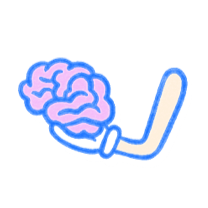*This post has been updated to reflect the ASWB Examination Guidebook, effective March 31, 2025.
The ASWB Advanced Generalist exam tests the skills and knowledge of experienced non-clinical social workers. Here’s everything you need to know in 2025.
ASWB Advanced Generalist Exam Overview
The ASWB Advanced Generalist exam contains 170 multiple-choice questions. Of these, 150 are scored and 20 are pretest items that are unscored. Candidates have 4 hours to complete the exam. It is designed for social workers with a master’s degree and experience in non-clinical practice areas.
Content Areas
I. Human Development, Diversity, and Behavior in the Environment (23%)
- Understand theories of human growth, development, and behavior across the lifespan, including biological, psychological, and social dimensions.
- Analyze family dynamics and group functioning to support effective interventions across various cultural and social backgrounds.
- Evaluate the effects of physical and mental health conditions on families, particularly in caregiving and bereavement contexts.
- Apply knowledge of trauma, violence, separation, and loss and their lasting impact on individuals and communities.
- Assess how environment, discrimination, privilege, and oppression influence identity and behavior.
- Apply models of organizational development, social change, and community development in practice.
- Interpret the role and effects of institutions and criminal justice systems on marginalized populations.
II. Intervention Processes and Techniques for Use Across Systems (32%)
- Conduct comprehensive biopsychosocial assessments, including strengths and risk assessments.
- Apply culturally appropriate and trauma-informed methods to gather sensitive data on issues such as abuse, addiction, and violence.
- Develop tailored intervention plans using client motivation, stages of change, and measurable goals.
- Implement crisis intervention strategies for individuals and families in acute situations.
- Use CBT, DBT, mindfulness, and psychoeducation to support client growth and coping skills.
- Facilitate therapeutic interventions for couples, families, and groups, integrating empowerment and strengths-based perspectives.
- Coordinate care, plan for aftercare, and evaluate the effectiveness of interventions over time.
- Use supervision and consultation to ensure ethical, high-quality service delivery across all systems.
- Engage in interprofessional collaboration and navigate organizational policies impacting service access.
III. Intervention Processes and Techniques for Use with Larger Systems (18%)
- Design, implement, and evaluate programs to address community or organizational needs.
- Establish clear program objectives, measurable outcomes, and continuous quality improvement mechanisms.
- Lead and participate in community organizing, advocacy campaigns, and social planning initiatives.
- Mobilize stakeholder participation to influence policies and advance equity in service access.
- Collaborate across systems using strategic planning, resource allocation, and policy development frameworks.
- Apply knowledge of power structures, organizational change models, and governance in influencing systems-level change.
IV. Professional Relationships, Values, and Ethics (27%)
- Demonstrate knowledge and application of the NASW Code of Ethics and the six core values of the profession.
- Maintain professional boundaries, manage dual relationships, and engage in appropriate self-disclosure.
- Ensure client confidentiality, secure informed consent, and fulfill mandated reporting responsibilities.
- Commit to lifelong learning, self-reflection, and self-care to maintain competence and prevent burnout.
- Apply ethical decision-making frameworks to complex dilemmas involving legal, cultural, or organizational issues.
- Use technology ethically for documentation, communication, and service delivery in accordance with best practices.
- Document client interactions and service delivery in compliance with legal, ethical, and organizational standards.
- Advocate for client empowerment, informed decision-making, and equitable access to resources.
- Actively address diversity, cultural humility, and anti-oppressive practices in all areas of service.
Advanced Generalist Exam Study Tips
- Use the official ASWB Guidebook to track your progress through content areas
- Take timed mock exams to simulate the real test environment
- Focus on strengthening ethical reasoning and systems-level intervention strategies
- Form or join a study group to review key concepts collaboratively
- Plan regular self-assessments to check readiness before your test date

